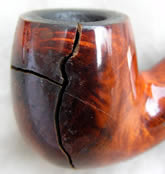 |
. |
|
|
|
||
No
216 - May 14, 2009 Just the other day I took a phone call asking for a quote on cigar cutters for a client, obviously a “give-away” token. The budget was limited, but the client “didn’t want rubbish”. For example, you are a cigar smoker from out of town, you arrive and feel like buying a cigar for the evening. You visit a Wesley’s, buy a cigar and then remember that you have left your favourite cutter at home. You don’t like your cigar pre-cut, so what do you do? This is when you need an inexpensive cutter which you might only use this once. I think that I have made the point of why we offer these inexpensive cutters. They are razor-sharp to begin with, however possibly not good for more than 40 to 50 cuts. In fact this is why we offer a comprehensive range of cutters, from R32.95 to R1100.00; double blade guillotine, scissors, cigar punch – cigar cutters that cover all tastes, all budgets and all occasions. Family: June 21 is Father’s Day.
Dad will have a “Happy Father’s Day”. Colin Wesley You can read previous articles from "Across the Counter" in The Library. |
No
217 - May 29, 2009 There is no escaping it – being a pipe smoker will bring out the DIY in you. From the very first smoke (after which you need to clean out the remnants in the bottom of the bowl), to the time your pipe needs a good ream and clean, you will use tools to scrape out, tamp down, ream and thoroughly clean the bowl and mouthpiece. Constant caring is vital to the ongoing enjoyment and longevity of your pipe. So why not make it as easy as possible by assembling those tools tailor-made for the art of pipe smoking, instead of gathering a hotchpotch We get to see the pipes when the damage has been done, for example:
So what tools are available? Here is a checklist: Tick off what you already have and consider what’s missing.
The first two problems we mentioned can be sorted out through our Repair and Cleaning Service. Actually if you are not a DIY man what a great gift this service makes – drop a hint! Colin Wesley You can read previous articles from "Across the Counter" in The Library. |
|||||||||||||||
No
218 - 11 June, 2009 This could be the credo for CAO International, the “boutique” cigar manufacturer with creative blends and innovative marketing.In 2006 James Suckling met with Tim Ozgener (President of CAO) to find out more about the company philosophy, and wrote the following for Cigar Aficionado. (Read the full article – it’s really interesting.) He was greeted on arrival at the factory in Danli, Honduras with the sight of “dozens of petit corona cigars in open cedar trays” each with a tiny international flag. “Welcome to the United Nations of cigars” says Tim Osgener. James Suckling continues “then I discovered that I also was expected to smoke each cigar and give my comments”. Amongst their really good ranges are CAO Brazilia (Nicaraguan and Brazil leaf), CAO America (Nicaraguan, Connecticut, Brazil) and CAO Italia – described on the CAO website as “made with tobacco from 4 countries, a full bodied smoke wrapped and bound in dark smooth Honduran leaves and filled with Peruvian and Nicaraguan tobaccos as well as Cubano seed tobacco grown exclusively for CAO in the Benevento region of Italy. Bold earthy and sweet.” Find out for yourself – try next week’s 3-pack. Philip Gregory Wynne is another cigar manufacturer who thinks outside the box. He speaks about choosing the leaf for his cigars: “A typical plantation sits in a small valley, called hoyos. These valley locations protect the plants from too much sun and wind. The basic formula for the best crop is a sheltered valley, good altitude to maintain temperature (not too hot or cold), and great draining soil. In 1996 he was approached by Frank Sinatra to make a “Sinatra” cigar. It had to be the best of the best, and made by a Sicilian (Philip is part Sicilian). They agreed on the blend and the robusto format, and as he was about to leave Sinatra said: "Kid, by the way, I want a Dominican cigar. This Central American stuff don't sell for sh--. Everyone wants Dominican." I said, "I don't have a Dominican factory." He said, "Now you do." So I threw out a number, and he said, "Do you want a check, or do you want it wired?"
Colin Wesley You can read previous articles from "Across the Counter" in The Library. |
No
219 - 25 June, 2009 Over many years behind the Pipe Counter I have been frequently confronted with this demon.There have been standard answers to combating the demon, but no real explanation of how and why. And just recently, a mail order customer from far away wrote: New scientific investigation has indicated that the sensitivity of one’s taste buds (taste receptors) may be a factor - as Dale Harrison’s article in a trade magazine (Pipes & Tobacco) explains. Another factor is the amount of moisture in the smoke. Finally what about the way you pack the pipe? We say “Smoking should be an extension of breathing, gentle and rhythmical.” But this can only be achieved if your pipe is packed just right for you. All of this leads to one inescapable conclusion: We’ve decided to make it easier for you. And while you’re there we have a special offer on pipes: The last 24 Marca PortoFino pipes must give way for the new range of Marca pipes expected in a few weeks.
Take advantage of both – sort out your tobacco, and enjoy it in a neat bent pipe. Colin Wesley You can read previous articles from "Across the Counter" in The Library. |
 |
||
|
|
||

